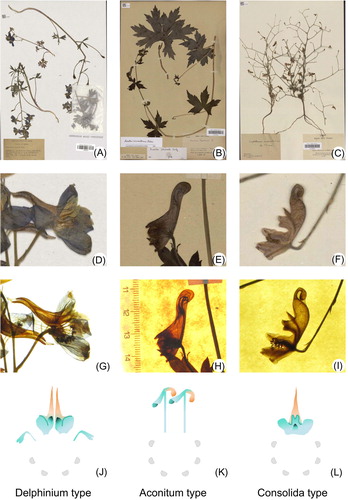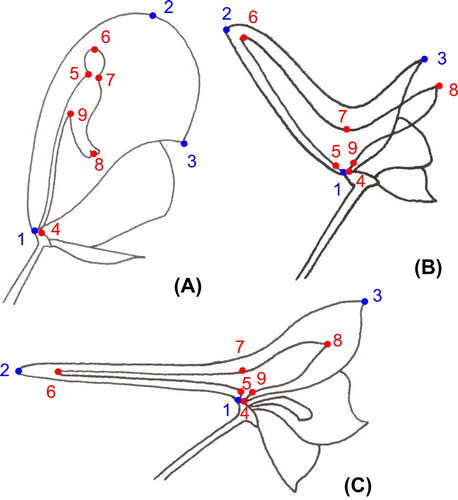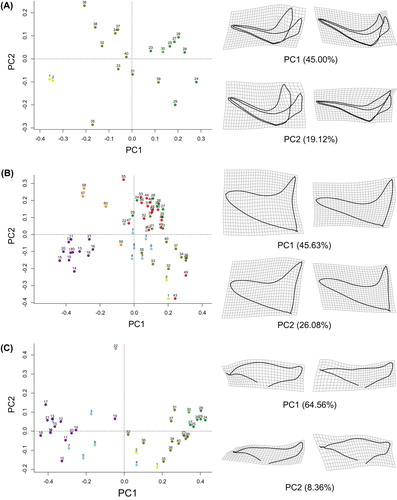Figures & data
Figure 1. Synthetic molecular phylogeny of the tribe Delphinieae based on the works of Jabbour and Renner (Citation2011a, 2011b, 2012a, 2012b), Wang et al. (Citation2013) and Xiang et al. (Citation2017). The same color code is used in Figure , Supplementary Figure and Supplementary Table 1. The number of species sampled and the total number of species in each infratribal group are given in parentheses.

Figure 2. Images of the dried flowers used for the geometric morphometric analyses. (A–C) Images of the full herbarium specimens. Digital images of the specimens can be visualized and downloaded using the following link: https://science.mnhn.fr/institution/mnhn/collection/p/item/search/form. (D–F) Focus on the flowers that were analyzed. (G–I) The same flowers, trans-illuminated. (J–L) The corresponding corolla of each flower type. The nectar spurs are indicated in orange. The petal primordia with an arrested development are represented with gray half-disks.

Figure 3. Position of the landmarks for the three flower types. (A) Aconitum type. (B) Consolida type. (C) Delphinium type.

Figure 4. Two-dimensional geometric morphometric analysis of floral shape variation in the tribe Delphinieae. Virtual flower shapes and deformation grids were produced to visualize the modes of floral shape variation along PC1 and PC2. The list of species names corresponding to the numbers in the principal component analysis (PCA) is given in Supplementary Table 1. The same color code is used in Figure , Supplementary Figure and Supplementary Table 1. (A) PCA of the variation in the shape of the dorsal module of the flowers from the type Delphinium. (B) PCA of the variation in the shape of the dorsal sepal of the flowers from all the genera and subgenera of Delphinieae. (C) PCA of the variation in the shape of the dorsal petal of the flowers from the types Delphinium and Aconitum.

